Ancient Galicia: Exploring Spain’s Celtic North
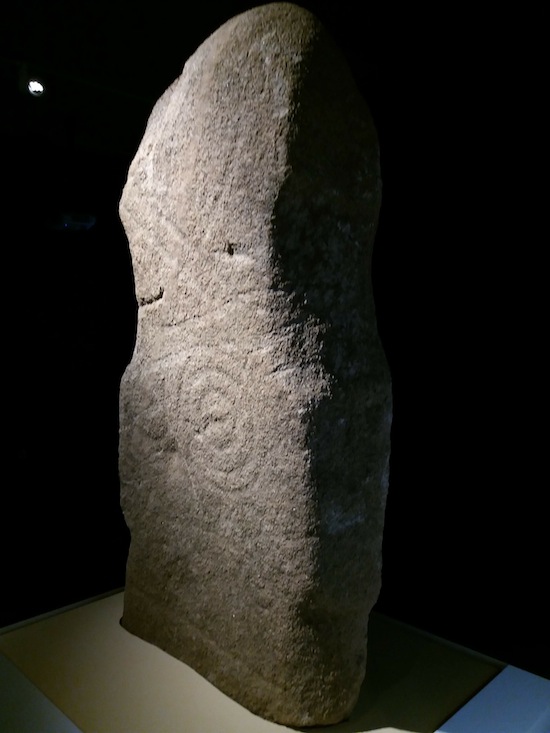
The Stele of Castrelo de Val, showing a shield and chariot.
This Bronze Age stele is similar to those found in Ireland,
Denmark, Sweden, and the Mediterranean.
When one thinks of Spain, one generally thinks of sun-soaked coastlines and arid stretches of plain, but Spain’s northern coast is a green, hilly region with a strong Celtic tradition. The westernmost region, just north of Portugal, is called Galicia. Here you’ll find cider instead of wine, bagpipes instead of castanets, and a rich archaeological heritage.
GALAICOS. Un pueblo entre dos mundos at the Museo Arqueológico Nacional in Madrid explores the ancient history of this region from the Bronze Age to the arrival of Christianity. It reveals a well-populated archaeological region that was connected to the Phoenician and Greek trade routes along the Atlantic coast to the tin mines in Britain. The exhibition shows some interesting examples of artifacts making their way along the trade route to Galicia from Italy, Greece, and North Africa.
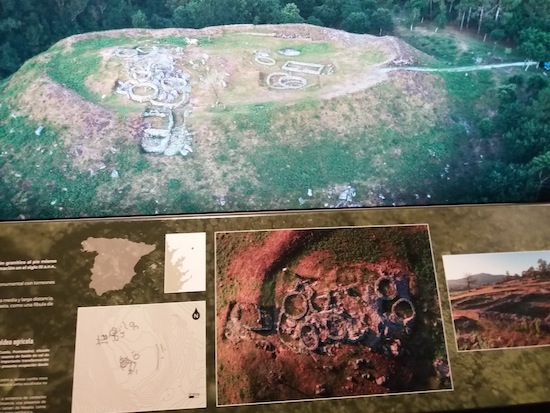
A typical dwelling in the Iron Age was the castro, a hilltop
fortified settlement. The castro of Castrolandín was founded in the 4th
century and had stone walls and a gate, plus densely packed houses.
These settlements dot the hilly landscape of Galicia. Finds of wine
amphorae and other Mediterranean goods are common at these sites
The fertile land and the resources offered by the sea meant that Galicia had a fairly dense population, concentrated in small, fortified villages. The region gets its name from the Roman name for the local tribes, the Gallaeci. The Romans first pushed into this region in 137 BC, coming up against an army of some 60,000 warriors. This must have been a coalition of different tribes who put aside their differences to face a common threat. They were not successful, however, and Roman military might emerged victorious. Resistance continued in the more remote regions until finally being stamped out in 19 BC.
This exhibition, while fascinating, covers a bit too large of a time period in too small of a space, so it ends up being more of a sampler than a thorough history. Luckily, the museum’s permanent exhibitions include large sections on Celtic Spain and Roman Spain.
Galaicos runs until February 3.
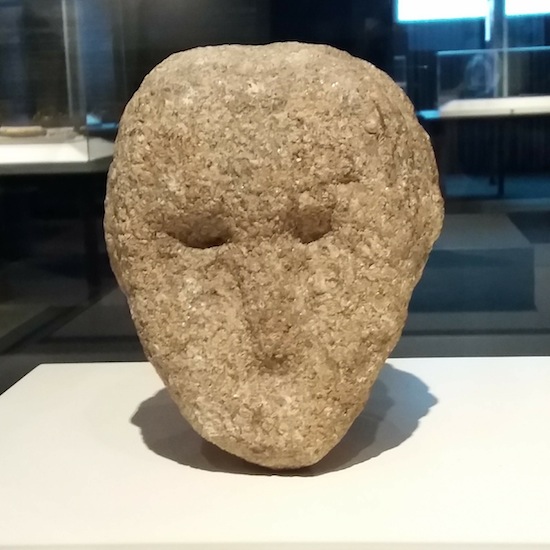
Stone Head, 2nd to 1st century BC
Photos copyright Sean McLachlan. More below!
Sean McLachlan is the author of the historical fantasy novel A Fine Likeness, set in Civil War Missouri, and several other titles. Find out more about him on his blog and Amazon author’s page. His latest book, Tangier Bank Heist, is a noir mystery set in the International Zone of Tangier in the 1950s.
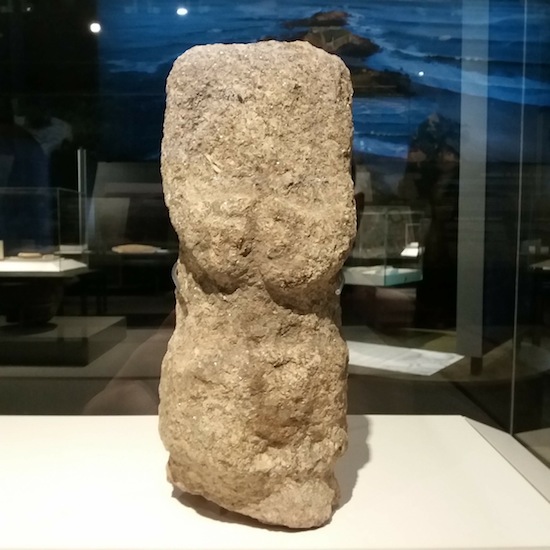
Anthropomorphic statue, 2nd to 1st century BC
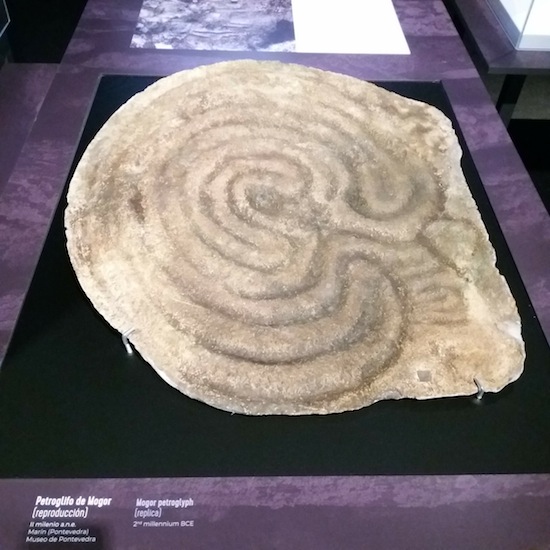
This labyrinth petroglyph from the 2nd millennium
BC shows an image common throughout Europe
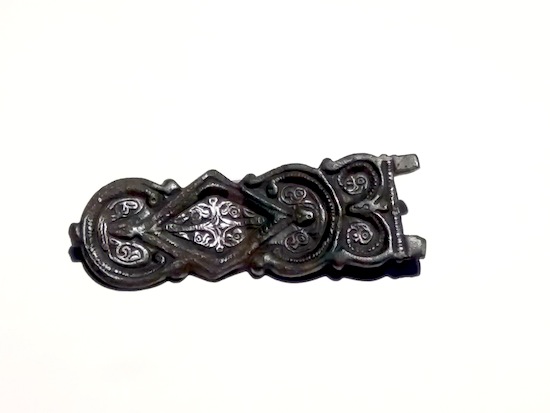
Bronze belt buckle, 6th-7th century AD
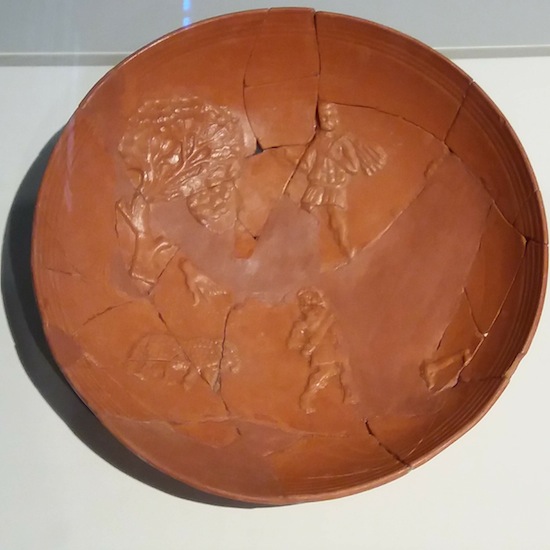
African red slip ware,
4th to 5th century AD, showing Abraham sacrificing Isaac
Fascinating, Sean. Although I knew recent dna evidence has confirmed Irish celts as being of Basque/Galician origin, I’d no idea the two cultures were so similar – as you probably know, our equivalent of the castro would be the ringfort. They’re dotted all over Ireland and are pretty much identical to your photos. The artefacts themselves wouldn’t be out of place in any Irish museum.
Did you get a chance to visit Castro de Baroña? It is one of the most amazing and inspiring places I have ever been in.
https://en.wikipedia.org/wiki/Castro_de_Baroña
Aonghus: The castros remind me of Pictish hilltop settlements in Scotland too!
Shadowphoenix: No, but it’s on the list!